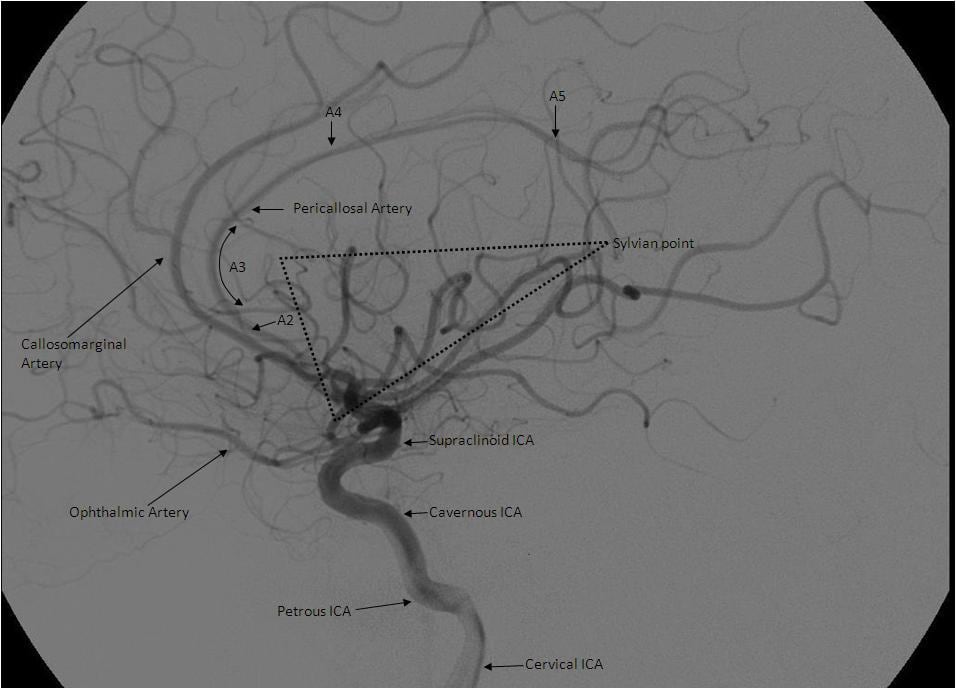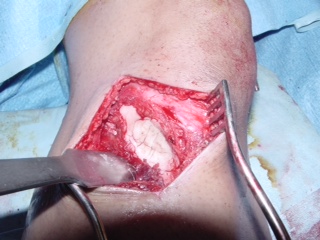The cerebral cortex of the brain has 4 lobes on each side: the frontal lobe, the temporal lobe, the parietal lobe and the occipital lobe. Each of these regions carries out specific functions, and damage to any of these areas results in corresponding impairment. The frontal lobes are relatively large compared to other regions of the brain, and the extensive functions controlled by the frontal lobe reflects that large size.
:max_bytes(150000):strip_icc():format(webp)/GettyImages-687794123-58c17e345f9b58af5ccb8447.jpg)
Occipital Lobe Strokes:
The occipital lobes are vital for visual processing. A stroke of the occipital lobe can cause vision loss or partial vision loss of one eye or both eyes.
Because of the way the blood vessels are arranged in the brain, occipital lobe strokes are less common than strokes affecting the frontal lobes, temporal lobes, and parietal lobes.

Fig: branching point of the right middle cerebral artery (MCA) trunk (red circle), suspicious for thrombus or embolus.
Of the 4 major lobes of the brain, the occipital lobe is the smallest—but in our daily lives, we perhaps lean on it the most. The lobe is located at the back of the skull, thus the name (“occipital” comes from the Latin for “back of the head”).
The occipital lobe’s purpose is to receive visual stimuli from the eyes, process the information, and forward the information to the frontal lobe (which will formulate a response). Put simply, the occipital lobe controls our ability to respond to things we see. However, that role is far more complex than we may understand at first.
While sight is probably our most valued senses, it’s also the one that’s most taken for granted. Because we use our sight so instinctively, we often forget about how incredible our sight truly is. Take a second and look at an object in the distance. A simple task, yes?
Except in that split second it took you to pick an object, your brain not only focused your center of vision on it, but it processed its contour, distinguished it from the objects around it, located its distance away from you, identified its size relative to the objects around it, and probably understood its relative size to you.
That’s a great deal of information to receive and process correctly in a split-second, but it’s what your occipital lobe does thousands of times every day. All told, your “ability to see” is actually a series of abilities that is made possible by the different parts of the occipital lobe.
CONSCIOUS & UNCONSCIOUS PROCESSING
Because our understanding of the world around us leans so heavily on sight, we associate our ability to see with our conscious decisions. For example, there are laws nationwide that address the problem of distracted driving. Lawmakers are facing a whole new generation of people behind the wheel who do not place their complete, conscious focus on the road.
Now, Plasticity Brain Centers is certainly not recommending texting while driving or anything similar, but sight depends on far more than conscious attention. In addition to the things you are focusing on, the occipital lobe is constantly processing visual stimuli that you may not be consciously aware of. This can result in something truly remarkable known as “blindsight.”
SEEING /WITHOUT SEEING: DAMAGE TO THE OCCIPITAL LOBE:
The condition we call “blindness” has two possible, general causes. The common one we know of is caused by damage to the eyes themselves. Because the receptors are damaged, the functioning occipital lobe receives no stimuli, so the brain cannot formulate a response to the outside world. In some of these cases, the occipital lobe becomes an additional site of processing for aural stimuli—which is why blind people seem to have incredible hearing or can respond to obstacles through sound.
However, the less common cause of blindness is a result of damage to the occipital lobe. For example, lesions on the occipital lobe can result in a “hole” in your vision known as a scotoma. Extensive damage can result in total blindness. Unlike other lobes of the brain, damage to one side of the occipital lobe can result in damage to both eyes’ fields of vision.
However, in these cases, the eyes are still completely functional. They continue to receive information, except the occipital lobe is not processing it correctly. While this results in a kind of blindness, some processing can still occur that isn’t consciously understood. For example, studies have been conducted on patients who are blind in one eye due to occipital lobe damage. Despite not being consciously aware of what they are seeing, these patients were able to navigate obstacles or detect movement without perceiving what they were seeing.
Treatments
Plasticity Brain Centers leverages the complex relationship between receptors (eyes, skin, tongue, nose, ears), stimuli, and their corresponding lobes (occipital, parietal, temporal, frontal) through clinical neuroscience. In other words, we use receptors of different kinds to create tests and targeted therapies for the damaged parts of our patients’ brains.
For damaged or underperforming occipital lobes, we employ visual stimuli such as eye movement training, visual search exercises, hand-eye coordination exercises, or light therapy to rebuild or create pathways between neurons. These pathways can bypass damaged tissue or rebuild old pathways in order to restore visual processing power.
Our therapies can improve a patient’s ability to perceive depth, distinguish objects from their surroundings, identify objects or people more quickly, and track objects with their sight more accurately. By understanding the state of your occipital lobe, we can more precisely identify why your sight is suffering and how we can restore function to the visual processing part of your brain.




:max_bytes(150000):strip_icc():format(webp)/GettyImages-687794123-58c17e345f9b58af5ccb8447.jpg)



